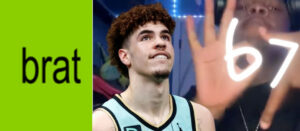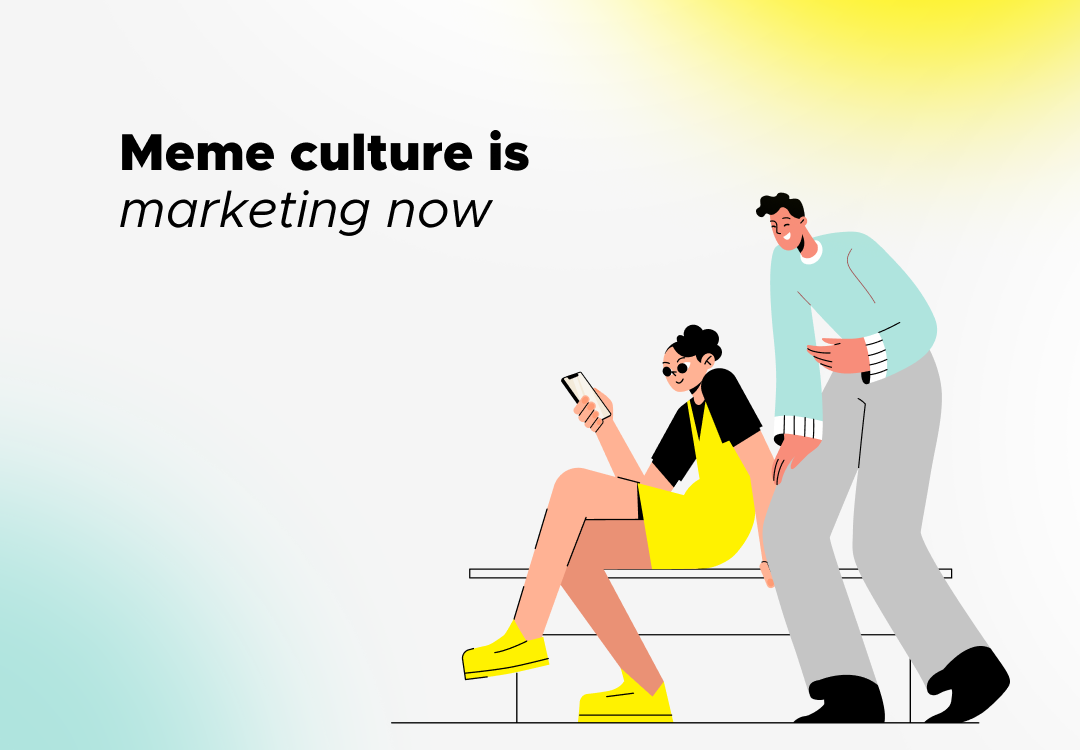2026 trend forecast: The lingo and micro-movements defining digital culture
Users are creating their own digital tribes - complete with insider languages like brat and 6-7. Time to decode the communities and cultural codes shaping 2026 - here's your guide to understanding what Gen Z and Gen Alpha are building online.
November 15, 2025

Digital culture is fragmenting at an unprecedented pace. As we move deeper into 2026, the era of mass social media is giving way to something far more intimate: micro-communities and social-first languages that unite niche audiences across platforms. The shift from broadcasting to belonging is reshaping how brands connect with consumers and what it means to be “relevant” in an age where everyone exists in their own digital tribe.
From “brat summer” in 2024 to the viral “6-7” phenomenon of 2025 – 2026 is defined by fragmentation, authenticity, and the power of niche over mass appeal.
The shift from viral to tribal: Why micro-communities define 2026
The days of chasing viral moments that reach millions are fading. Brands are moving away from mass marketing to focus on micro-communities – exclusive, highly engaged groups on platforms like Discord, WhatsApp, and private forums that foster deep engagement, trust, and long-term loyalty.
Studies show that 44% of community members are more likely to participate in discussions tailored to their interests. Rather than pursuing reach, successful brands in 2026 are pursuing depth, building relationships with smaller, more passionate audiences who act as brand advocates.
Where micro-communities thrive
Users are migrating from public feeds to private spaces including WhatsApp Channels, Discord groups, Telegram, and Instagram broadcast channels. Discord alone hosts 19 million servers as of 2023, each functioning as a distinct digital tribe with its own culture and norms. Spaces like Discord, Geneva, and Reddit Communities allow users to connect more deeply over common passions rather than broad demographics.
Does this mean TikTok, Instagram and X are dying? Not at all. Think of them as the town square where all communities collide – the mainstream hubs where cross-platform interaction happens and different communities can actually connect with each other.
Social-first languages: How keywords become cultural currencies
Language on the internet moves faster than ever, and 2026 is defined by social-first vocabularies that emerge from TikTok, gaming communities, and niche fandoms before filtering into mainstream consciousness. These aren’t just words, they’re cultural codes that signal belonging, insider status, and shared values.
2024’s “Brat Summer” and 2025’s “6-7”: Defining Cultural Phenomena
Every year produces its defining cultural moment, a linguistic phenomenon that captures the zeitgeist and becomes inescapable across digital platforms. In 2024, that moment was “brat summer.” In 2025, it was “6-7.”
The “Brat” legacy (2024)
The phrases “is brat” and “brat summer” were used about 786,000 times from January through November 2024, with the biggest day for brat slang being September 3, 2024. The term, popularized by Charli XCX’s album, evolved from describing a badly-behaved child to meaning a person embracing a carefree, party-loving attitude, characterized as someone a bit messy who loves to party and maybe says dumb things sometimes, being honest, blunt and a little bit volatile. Charli recently made headlines as her signature brat-energy contrasted with Taylor Swift, who allegedly took aim at her in lyrics on the new album.
Collins Dictionary named “brat” the 2024 Word of the Year, defining the term as “a confident, independent, and hedonistic attitude,” calling it a fitting word for a year when hedonism and anxiety combined to form an intoxicating brew. The phenomenon demonstrated how a single album and its lime-green aesthetic could spawn an entire cultural movement, complete with its own visual language and value system.
The counter-movement emerged quickly. Following “brat,” the phrase “very demure, very mindful” took the internet by storm, popularized by content creator Jools Lebron, as “demure” became synonymous with quiet, unbothered sophistication. The pendulum swing from chaotic party culture to mindful restraint illustrates how quickly digital culture metabolizes and responds to trends.
The “6-7” phenomenon (2025)
If “brat” defined 2024, then “6-7” (pronounced “six-seven”) became 2025’s unavoidable cultural touchstone, but with a critical difference: it means absolutely nothing. Dictionary.com named “67” as its 2025 Word of the Year, describing it as “one of the first Words of the Year that works as an interjection, a burst of energy that spreads and connects people long before anyone agrees on what it actually means.”
The phrase originated from rapper Skrilla’s song “Doot Doot (6 7)” and exploded into mainstream consciousness through basketball player Taylen Kinney’s viral videos and a March 2025 clip of a boy nicknamed “67 Kid” yelling the term at a basketball game while performing an excited hand gesture. The connection to NBA player LaMelo Ball, who stands 6 feet 7 inches tall, added another layer to the meme’s tapestry.
By mid-2025, “6-7” had become ubiquitous. According to Google Trends, “6-7” is the top search for “how to use [slang]” and “why do middle schools say” in 2025, with “Gen alpha translator” searches increasing 790% over the previous year. Schools began banning its use due to classroom disruption, with teachers reporting hearing it up to 75 times in a single school day. The trend spread globally, with viral videos showing people saying “6-7” in 20 different languages.
The Merriam-Webster dictionary defines it as “a nonsensical expression connected to a song and a basketball player.” Unlike “brat,” which carried specific cultural values around confidence and authenticity, “6-7” represents something more fundamental about Gen Alpha communication: the numbers are used without any fixed meaning, instead functioning as an inside joke that creates belonging through shared absurdity rather than shared values.
The lack of meaning is precisely what gives it meaning to its audience. It represents the humor of a generation raised in an online world where randomness, speed, and absurdity matter more than structure or sense. For Gen Alpha, shouting “6-7” became a shared inside joke, a piece of “brain-rot humor” that adults find baffling but which feels instantly unifying to those in on it.
2025-2026’s essential vocabulary
Language continues to evolve at breakneck speed. Here are the keywords and phrases defining digital culture in 2026:
Core Gen Z/ Gen Alpha terms:
- Rizz: Derived from charisma, describing the ability to attract or charm someone romantically
- Bussin’: Food or experiences that are exceptionally delicious or excellent
- Mid: Something average or underwhelming that doesn’t live up to the hype
- It’s giving: A phrase describing the vibe or impression of someone or something
- Aura: The vibe or energy a person or thing gives off, can be positive or negative
- Living rent free: When you can’t stop thinking about something
- The ick: A feeling of sudden repulsion or cringe toward someone or something
Other emerging 2026 language:
- Skibidi toilet/brain rot: Chaotic humor with no clear meaning, part of the same absurdist Gen Alpha vocabulary as “6-7”
- Fanum Tax: When someone takes food from a friend without asking, originating from Twitch streamer culture
- Main character energy: Acting like the star of your own online story, either confidently or self-centeredly
- Corecore: TikTok trend layering random clips into chaotic edits that turn chaos into commentary
- Canon event: A moment that feels inevitable in one’s personal story, borrowed from superhero movie terminology
- Womp womp: Dismissive phrase mimicking a comedic fail horn, used when something is unimpressive
Gen Alpha slang is playful, ever-changing, and rooted in meme, gaming, and internet culture. Born between 2010 and 2024, they represent 2 billion people commanding $5.46 trillion in spending power by 2029. They’re already reshaping culture, platform dynamics, and how brands build relevance.
The key to successful brand communication in 2026 isn’t adopting every trend, but understanding the cultural context behind the language and using it authentically when appropriate.
What this means for brands: Strategies for 2026
The fragmentation of digital culture demands new approaches to marketing and brand building:
1. Depth over reach
Global success now depends less on how wide your message can reach, and more on how deep it can go, with mass reach becoming superseded by conversion, and mainstream becoming replaced by tribes.
2. Community first
For brands, the micro-community shift means focusing less on reaching everyone and more on building meaningful engagement within micro-communities, with niche engagement outperforming mass posting as audiences look for spaces that feel smaller, safer, and more relevant to their lives.
3. Linguistic fluency
Understanding and appropriately using social-first language isn’t optional. However, forced or inauthentic adoption of slang is immediately spotted and rejected by digital natives.
4. Platform diversification
Social media is becoming less ‘social media’ and more ‘community media,’ with platforms like Reddit, Discord, and LinkedIn Groups seeing explosive growth in 2025, with 90% of Reddit users trusting the platform for product insights.
5. Real-time cultural engagement
The capability to create high-quality content faster than ever is essential, with teams able to go from idea to consumer test in two hours, allowing for quick iterations based on live feedback and shifting trends.
Bottom line
The digital landscape of 2026 is defined by fragmentation, authenticity, and the power of shared language within micro-communities. The era of one-size-fits-all marketing is over. Success belongs to brands that understand the cultural codes of their tribes, engage authentically in niche spaces, and recognize that depth of connection matters more than breadth of reach.
The shift from cultural moments to cultural movements is only just beginning. For marketing leaders, the question isn’t whether to engage with micro-communities and social-first language, but how quickly you can adapt your strategies to meet audiences where they actually are: in Discord servers, private Telegram channels, and niche Reddit forums, speaking languages that evolve by the day and building tribal identities that transcend traditional demographic categories.
In 2026, cultural relevance isn’t measured in impressions or reach. It’s measured in belonging, in linguistic fluency, and in the depth of relationships built within the digital tribes that now define how people connect, communicate, and consume.
Latest News ☕

Platform wars: Where should your brand invest in 2026?
November 13, 2025
While most brands chase familiar platforms, forward-thinking marketers are building advant...

Top 5 Christmas campaigns: How the biggest brands are celebrating
November 11, 2025
The best Christmas campaigns of 2025 are already making waves across social media. Here's ...

Meme culture in social media marketing in 2026: how brand accounts are leaning into the success
November 8, 2025
Meme marketing has evolved from internet joke to serious business strategy, with the indus...


